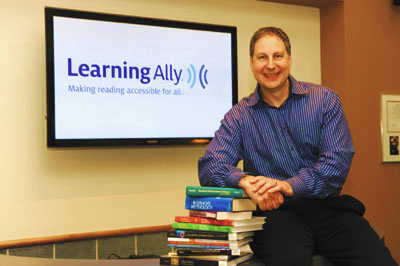by Andrew Friedman, President and CEO, Learning Ally
 It is apparent that the ed-tech community remains vigilant in tackling both the age-old problems in public education and the rapid shifts that compel our industry forward -- to develop the best products and services that will significantly benefit our students and the educators who teach them.
It is apparent that the ed-tech community remains vigilant in tackling both the age-old problems in public education and the rapid shifts that compel our industry forward -- to develop the best products and services that will significantly benefit our students and the educators who teach them.
There are many challenges to overcome before a “nirvana” in public education can occur, but the one that remains consistent is the vast reading crisis in America. A failure to read for any student is never an option and their inability to read has far-reaching consequences for all -- from the school administrator to the teacher, student, their family, our industry and our nation. Reading challenges affect all student populations, yet those at the highest risk are children born into low-income households and students who have gone undiagnosed with a learning disability, like dyslexia for many years of their education. These students have and will suffer a great tragedy and many may never reach their true academic potential.
When we look at the research about reading in the U.S., it signals an alarm. The National Assessment of Educational Progress (NAEP) 2015 results reports among the 10,000,000 kindergartners entering school this year, (2016) 6.4 million of them will not be reading at grade level proficiency in four years. These students are 400% more likely to not receive a high school diploma than their peers. The statistics show the lack of reading proficiency in our nation is a key reason why an estimated 8,000 students drop out of school each day limiting their financial potential and ability to compete in the workforce. By 2020, the U.S. will face a shortage of 1.5 million workers with college degrees.
How are we to tackle this critical issue so that more students can break through the cycle of poverty, learn at the same pace as their peers, and be active learners? There is never a silver bullet, but we must continue to bridge the gap for more struggling learners and support the many school leaders and teaching professionals who work in this endeavor.
The Key is Better Understanding Our Students
Just the sheer diversity of a U.S. school classroom today bodes many challenges of a rapidly traversing learning landscape, but we must remain even more focused to devise personalized learning strategies that can improve educational outcomes. Learning Ally believes that we are at an inflection point …and approaching the point where science and technology can help us to better understand our students and how they learn.
Through successful partnerships with State DOE’s, Denver Public Schools, the University of California at San Francisco Dyslexia Center, LAIP California Northridge, and many leading research experts in neuroscience and instructional design, we believe that every student should and will be able to receive a personalized learning plan. This will be the “new norm” for education excellence – customization, personalization and automation.
The result of many partnerships and the data we have been able to collect over our 70-year history of developing human-read audiobook solutions have provided great opportunities to study the reading patterns of all types of learners, all ages, all grades, all demographics and socio-graphics.
Emerging partnerships with neuro-researchers are now allowing us to better understand and identify root causes for the students we serve. We have seen shifts in educational (and we believe social and emotional) outcomes when we can engage struggling readers to read for more than 30 days consecutively in the school year. We know that continuing on this path will give us more insight into what engages specific types of learners.
To that mission, we are committed to all of you in our ed-tech and education communities to help to remove more barriers to learning so that every student will receive the environment and instruction that is best suited for them. This will ultimately help more students to reach their true academic potential in school and to lead lives that are more productive in all walks of life.

Article originally published in the 2017 Voices of Industry column for MDR's EdNET.